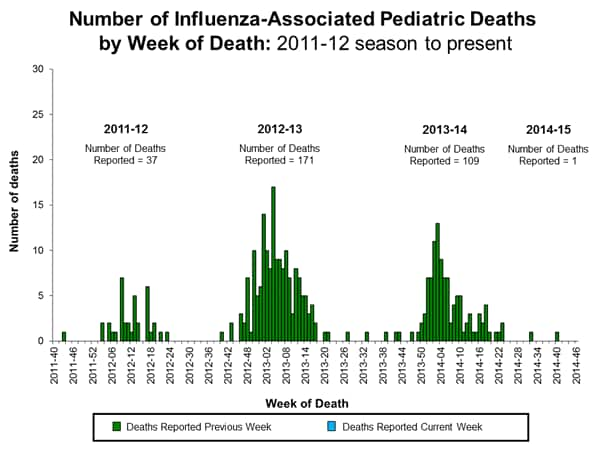Has CDC stopped testing for H1N1 because the pediatric vaccine isn’t working against H1N1?
CDC admits this lack of effectiveness:
“During 2013-2014 there was no measurable effectiveness for LAIV [live attenuated influenza vaccine] against influenza A (H1N1) among children enrolled in the study.”
but couched it in a lot of confusing verbiage.
So, if these children got that vaccine, it would have offered them no protection against the swine (H1N1) flu.
Yet the Florida Department of Health used its report of two pediatric deaths to scare parents and push flu vaccines, while refusing to say whether the children who died were vaccinated, and lying about the effectiveness of the available vaccine.
It isn’t only the Florida DoH acting oddly. CDC is supposed to test flu strains to see which are circulating each season. But suddenly, they are no longer testing for H1N1, despite the fact it was the predominant strain last year and they tested for it last year. For example, CDC noted extreme predominance of H1N1 last year:
“Effectiveness against the flu A “2009 H1N1” virus, which was the predominating flu virus during the 2013-14 flu season, was 62% (95% CI: 53% to 69%) for children and adults. During the study period (Dec 2, 2013 – January 23, 2014), the 2009 H1N1 virus accounted for 98% of flu viruses detected. (Note: There were not enough influenza B or influenza A (H3N2) viruses detected during the study period to make a mid-season estimate of vaccine effectiveness against either of those viruses.)”
But it is even worse than this. If you look at the bottom chart, CDC acknowledges that 88% of flu specimens were Influenza A, and only 30% of these were H3… suggesting that 70% were H1, and probably nearly all of those were H1N1. But instead of CDC saying it didn’t know how many were H1N1, since CDC did not test for H1N1, CDC claims that there were 0.0% H1N1 Swine Flu specimens. That is a very precise number: 0.0%–and a total falsehood.
The Florida Department of Health announced Monday the deaths of two children, one in Pasco County and one in Orange County, from flu-related complications. Health officials refused to provide the ages and hometowns of the children. The Pasco child had an underlying health condition, said Deanna Krautner, a spokeswoman for the Pasco County Health Department. . . Experts say flu deaths in otherwise healthy people are unusual. Pre-existing health conditions often play a role in how individuals react to the flu. . .
“Our hearts go out to the family and friends of these children,” said Dr. Celeste Philip, deputy secretary for health and deputy state health Officer for Children’s Medical Services. “Getting the flu vaccine is the best way to protect yourself and others from the flu.”
In Florida, the most common influenza subtype detected in recent weeks has been influenza A (H3). Officials refused to say if that’s the type found in the two recent deaths. . .
Currently available vaccine formulations protect against all (sic) strains of influenza that have been identified as circulating in Florida this season, state health officials said. [But if you don’t identify it, then you can make this claim without lying. Clever, huh?–Nass]
The U.S. Centers for Disease Control and Prevention recommends everyone age 6 months and older get vaccinated, with a few rare exceptions. State officials on Monday declined to say whether the two children who died had been vaccinated.

Influenza-Associated Pediatric Mortality:
U.S. Virologic Surveillance:
| Week 46 | |
|---|---|
| No. of specimens tested | 10,304 |
| No. of positive specimens (%) | 955 (9.3%) |
| Positive specimens by type/subtype | |
| Influenza A | 836 (87.5%) |
| 2009 H1N1 | 0 (0.0%) |
| H3 | 257 (30.7%) |
| Subytping not performed | 579 (69.3%) |
| Influenza B | 119 (12.5%) |

I sat through this presentation a week or two ago and was quite puzzled, actually as well. I find it so funny when they're recommendations and guidance are the exact opposite of the evidence they're (sometimes) sharing (and sometimes withholding).